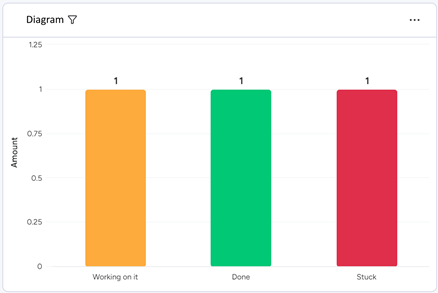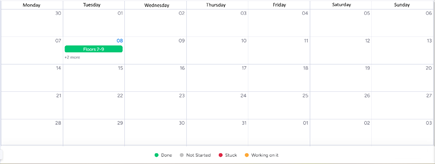1. Introduction
This article describes the process of choosing the optimal software solution for solving in practice the problem interaction between specialists inside the project team. The main problem of the engineering department of the engineering company was facing a correlation between 1:1 specialists, 5 structure engineers on 5 design engineers, not including related specialists, and the management could not organize interaction between specialists for the issuance of design documentation to the construction site within the time frame set by the customer. The resulting problem, as well as the growing volume of order portfolios, put the team of engineers in a difficult position since due to the increase in the volume of orders, the interaction problem will intensify. Attracting additional specialists to work remotely partially covered the needs associated with the growing volume of work, but simultaneously intensified the original problem of internal interaction since the remote specialists were physically absent from the office (Goodall-Monk & Madison, 2023). To solve the problem, two main methods of automating project management were considered (Miljanic & Zaric, 2020). In this article, the comparative analysis was based on the classic way of project management based on Excel tables (Mohamed, 2023) and the online way of project management based on the “Monday” cloud service (Ng Poi, Darwin, & Riche, 2022), (Barbara, 2021). This comparative analysis reflects the general advantages (Kondova, 2022) and differences between these two ways of project management based on the practical requirements necessary for managing a large number of projects (Mladen,
Mladen & Zlata, 2012) and also reflects the purpose of this study, such as debugging fast interaction between specialists within the team without wasting time with maximum efficiency when managing a large number of projects (Thilini Weerasuriya, John, Srinath & Samudaya, 2023). The results of this analysis apply not only to the design industry but also to all other divisions of the construction industry (Norshakila, Mohamad & Mohammad, 2013).
2. Materials and Methods
To conduct the study, it is necessary to determine the stages of the release of design documentation, as well as to analyze the stages of production of design documentation. Today in the world practice there are four stages of production of design documentation. The first stage is the preliminary stage. The second stage is the confirmation of design documentation for its further approval. The third stage is a tender and the fourth stage is design documentation prepared for direct transfer to the construction site. To implement the project, it is necessary to determine what stages it is necessary to break down the structural part of the project, most often the building is broken down by floors. Each floor includes the following structural elements such as ceilings, walls, beams, and columns. Let’s consider the use of a cloud project management service using the example of a building consisting of ten floors for more effective control of the project, it must be broken down as follows: the first floor, then from the second to the ninth, these are typical floors, the tenth floor, and the roof. Next, necessary to set the project manager, most often the chief engineer or project manager, who will lead the project and control the quality of all the drawings that will be sent to him by the performers for subsequent verification and approval. Then the status of execution is set and the dates are set, which the performers must meet to complete the task set by the engineer. And also the priority of the task depends on the urgency of completing a particular stage of the project. Next, the engineer or project manager can set additional parameters and attach the original project files, for example, the drawings sent by the architect. Next, necessary to add the project participants who will directly work on the project and send the files to the chief engineer for review (Fig. 1).

Fig. 1. Shows a project grid, which includes the status of the developing project, participants, priority, last updates, and other additional project files
When solving this problem or similar problems, creating a workspace in a tabular form using a ready-made template offered by the service based on the analysis of similar problems takes about 10 minutes. Executing a similar task using classic control methods, such as Excel tables can take from 20 to 30 minutes. First of all, this is because all the initial data that must be used to manage the project must be entered manually, including formulas. These labor-intensive actions must be performed manually in order to subsequently build diagrams that will be used to analyze the progress of the project (Fig. 2, 3).
.
Fig. 2. It shows a diagram. It’s necessary for a graphical display current status of all stages of a project for a manager which control and manages the project.

Fig. 3. Shows the status of finishing different stages of a project in the calendar plan.
In comparison with the classic tabular method of project management, the main advantage of using cloud solutions is a simplified data entry process, and access to this platform from any computer or mobile device using Internet access. Also, this project is protected and only people who have been invited to this project via a link have access to it. Progress in project management, if necessary, can be shared directly with the project manager, who is the person responsible for the project. All changes made to the system are displayed instantly with an email notification sent to the specified project participants. This allows all persons involved in this project to quickly begin solving the task and solve it in a short time, which ultimately leads to increased productivity and timely completion of the project. This is especially true when the chief engineer manages 10 or more projects. Cloud technologies also allow integration with related auxiliary services, such as a calendar, cost-estimate database, email, and systems for holding online conferences. The practical application of this technology in production has made it possible to control a huge number of projects without creating conflicts when issuing design documentation to the customer on time. This technology is not limited to application only in the production of design documentation, but can also be widely used by related specialists and directly at the construction site due to prepared templates for certain tasks.
3. Results and Discussion
The result of implementing this technology directly in production not only reduced the time for developing methods of controlling the execution of project documentation on time by all specialists involved in the project but also allowed working on ten or more projects simultaneously, which led to a real increase in labour productivity and the order portfolio (Figure 1). In comparison with classical methods of control in the form of tables, cloud technologies are the most promising since they do not require the user to create project parameters from scratch due to pre-prepared and tested templates on similar projects (Figures 2, 3). Cloud technologies also provide security and immediate access to the project from any point where there is Internet for a specialist involved in the project. Cloud solutions allow you to easily integrate additional modules used in the project, and also automatically prepare the necessary diagrams for visually displaying the results of academic performance, taking into account the deadlines for the project manager.
4. Conclusions
Due to the expansion of the scope of problem-solving, cloud solutions are without disputes effective for solving the problems of control and project support both within the work team and management interested in effective work within the company and expansion of its trade in the growing real estate market.
References
- Ng Poi W., Darwin D., Riche S. (2022). Operational Improvements In It-Based E-Commerce Companies Using Monday.Com. Jurnal Teknologi Dan Sistem Informasi Bisnis. 4(1):102-106.
- Barbara A. M. (2021). The adaptability of Monday.com’s app-based software: Discover the company building a flexible business model that adapts to individual company needs. Journal of Information Technology Teaching Cases. 12(2): 156 - 162.
- Miljanic M., Zaric N., (2020). Review of collaborative software applications and integration with standard collaboration tools. 24th International Conference on Information Technology (IT). 1-4.
- Kondova L.D. (2022). Optimizing the Internal Processes by Implementing a Project Management Software System at ASG Nederland. University of Twente Student Theses. 1-55.
- Goodall-Monk, Madison. (2023). All Work and No Play: How Digital Platforms Controlled Work, Disability, and Time During the COVID-19 Pandemic. Masters thesis, Concordia University. 1-93.
- Thilini Weerasuriya G., John P., Srinath P., Samudaya N. (2023). Chapter 14: Software for IT Project Schedule and Cost Management. Domain-Specific Bodies of Knowledge in Project ManagementManaging Information Technology Projects. 390-410.
- Mohamed A.H. (2023). Investigate the Efficiency of Project Management Software in Construction Projects. The Eurasia Proceedings of Science Technology Engineering and Mathematics. 22: 247-257.
- Mladen V., Mladen R., Zlata D.A. (2012). The use of project management software in construction industry of Southeast Europe. Tech Journal. 2:249-258.
- Norshakila M. R., Mohamad S. F., Mohammad A. (2013). A Review of Project and Programme Management Reference Models for the Construction Industry. International Journal of Construction Engineering and Management. 2(4A): 17-20.

 View this article in Russian
View this article in Russian